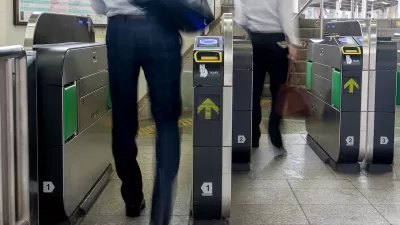Like the curb cut effect achieved by the Americans With Disabilities Act, which benefitted a much larger cross-section of the population than the legislation originally intended, gender mainstreaming could multiply benefits in the public realm.

Ania McDonnell, a public policy graduate student at the Humphrey School of Public Affairs at the University of Minnesota, writes from personal experience with harassment on public transportation: "Transportation planners should be required to implement gender mainstreaming in all comprehensive plans created for the city."
McDonnell references the authoritative definition of gender mainstreaming provided by UN Women:
The process of assessing the implications for women and men of any planned action, including legislation, policies or programmes, in all areas and at all levels. It is a strategy for making women’s as well as men’s concerns and experiences an integral dimension of the design, implementation, monitoring and evaluation of policies and programmes in all political, economic and societal spheres so that women and men benefit equally and inequality is not perpetrated. The ultimate goal is to achieve gender equality.
For planners, gender mainstreaming will require a new focus. For most its history, according to McDonnell, planners have neglected to consider the social aspects of the systems they created. According to McDonnel, gender mainstreaming would have several effects for mobility:
- Reduce vehicle congestion on highways because more women will use public transportation.
- Reduce the costs of police on public transportation.
- Allow for more targeted and efficient use of police time and energy to ensure safety on the light rail.
FULL STORY: Why gender mainstreaming in city planning is the cure to the street harassment epidemic

Maui's Vacation Rental Debate Turns Ugly
Verbal attacks, misinformation campaigns and fistfights plague a high-stakes debate to convert thousands of vacation rentals into long-term housing.

Planetizen Federal Action Tracker
A weekly monitor of how Trump’s orders and actions are impacting planners and planning in America.

In Urban Planning, AI Prompting Could be the New Design Thinking
Creativity has long been key to great urban design. What if we see AI as our new creative partner?

King County Supportive Housing Program Offers Hope for Unhoused Residents
The county is taking a ‘Housing First’ approach that prioritizes getting people into housing, then offering wraparound supportive services.

Researchers Use AI to Get Clearer Picture of US Housing
Analysts are using artificial intelligence to supercharge their research by allowing them to comb through data faster. Though these AI tools can be error prone, they save time and housing researchers are optimistic about the future.

Making Shared Micromobility More Inclusive
Cities and shared mobility system operators can do more to include people with disabilities in planning and operations, per a new report.
Urban Design for Planners 1: Software Tools
This six-course series explores essential urban design concepts using open source software and equips planners with the tools they need to participate fully in the urban design process.
Planning for Universal Design
Learn the tools for implementing Universal Design in planning regulations.
planning NEXT
Appalachian Highlands Housing Partners
Mpact (founded as Rail~Volution)
City of Camden Redevelopment Agency
City of Astoria
City of Portland
City of Laramie





























